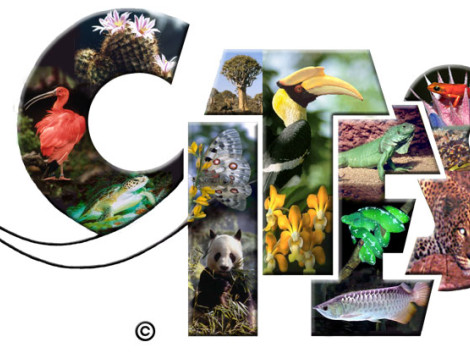

News | 28.04.2023
On April 6, as part of the ATIBT's "CITES" initiative, the association met in Brussels with the Management Authority (Anne VANDEN BLOOCK) and the Scientific Authority (Christiaan CEUSTERS) of CITES Belgium, as well as with their main scientific experts for trees (Hans BEECKMAN and Nils BOURLAND of the Tervuren Museum). The ATIBT was represented by Françoise VAN DE VEN, President of the ATIBT, Franck MONTHE, Head of the CITES Action Plan, Nicolas BAYOL, President of the Forest & Industry Commission, and Jean-Louis DOUCET, President of the Scientific Council.

This meeting took place within the framework of the initiative to support the marketing of African species listed in Appendix II of CITES launched by the ATIBT last February. As a reminder, this initiative follows the decision taken in November 2022 during the CITES COP in Panama to list African species of the genera Afzelia, Khaya and Pterocarpus in Appendix II of the Convention, as well as Cumaru and Ipe from Brazilian forests.
While Appendix II does not prohibit trade in listed species, all imports, exports and re-exports of species covered by this Appendix must be accompanied by the necessary permits. The issuance of these documents can in some cases be very time-consuming and lead to blockages and considerable financial losses.
As a reminder, a legal and sustainable forest economy is crucial in many tropical countries, because of its contribution to the maintenance of forests and the social and environmental services they provide.
The meeting was structured around the following main points:
This analysis is based on the methodological approach developed in the framework of the project "Updating the vulnerability status of exploited ligneous species in Central Africa", financed by the COMIFAC Programme for the Promotion of Certified Logging (PPECF), Gembloux Agro-Bio Tech (University of Liège) and the MBG via the Franklinia Foundation. The vulnerability status of each species was established using criterion A3 of the IUCN Red List. The aim was to model the population reduction of the species in 100 years by integrating the impact of logging and habitat loss. The methodology used is based on the analysis of data from 98 forest management units representing approximately 22 million ha of forest. Additional information (species population density, diameter structure, intensity of threats to key dispersers, and the match between regular fruiting diameter and minimum legal harvesting diameter) was also considered in the analysis of the status of each species. The results show that the species Afzelia bipindensis and Pterocarpus soyauxi newly listed in CITES Appendix II are not threatened. The proposed statuses were validated during a workshop held from 5 to 9 December 2022 in Libreville, Gabon.
This methodology, highly appreciated by CITES Belgium experts, includes most of the indicators proposed by the EU SRG (Scientific Review Group) in its definition of sustainability criteria for species exploited in the permanent domain, available here.
This approach and the results obtained were shared with the CITES Secretariat in Geneva on April 13 during a virtual meeting with CITES Chief Scientist Thea Carroll. The Secretariat also wishes to strengthen its collaboration with the ATIBT.
From the brief analysis of the NDFs produced in Central Africa, it is clear that nothing in particular has changed in the method of calculating quotas in the region. It is still based on the inventory of stocks in the concessions, from which a quota per concession is calculated, and then an aggregation of these quotas is used to establish the national quota. However, the question of conversion to Roundwood Equivalent still arises. In the DRC, the two studies that have been carried out, which estimate transformation rates of around 50% at Afrormosia, are not reliable, according to CITES Belgium experts.
In Europe, the main scientific orientations of CITES are validated by the SRG (Scientific Review Group), which meets twice a year. The decisions validated by this group are applied in all European countries. Spain chairs the SRG, with strong support from Germany, which leads the working group on listing proposals. It is this group that is currently working on the proposal to apply a recovery rate between 75 and 100% for exploited CITES species. The ATIBT experts explained the limitations of the recovery rate; indeed, the recovery rate is a forest management tool to assess future production, and it does not measure the evolution of a population of trees but only that of trees beyond a certain exploitable diameter and on a given area. However, the rate of recovery is the main component of the regeneration index published by CITES Europe's RMS, which can be downloaded here.
To facilitate licensing in Europe, exporters must ensure that:
According to Belgian CITES, certification is not considered in the issuance of import permits. CITES bodies apply the same procedures to certified and uncertified timber. However, the debate is currently open within the CITES EU SRG on the consideration of certification. The ATIBT recalls that certain CITES decisions are quite prejudicial for the administrations of the producing countries and discourage the companies that try to respect the existing norms and standards (notably certification). These companies are mostly European-owned. If they cannot trade in Europe, their companies risk bankruptcy. This situation could jeopardize years of sustainable management efforts and the preservation of species, given the crucial role that these companies play in respecting the legal rules of sustainable management in force in the sub-region.
At the end of the meeting, the ATIBT recalled its availability to facilitate exchanges between the CITES bodies of Europe and Africa, for the proper implementation of CITES measures.
This first phase (3 years) of the ATIBT's CITES initiative aims in particular to ensure a good interaction between the CITES authorities of exporting countries and those of importing countries. The FAQ set up within the framework of this initiative provides answers for the operators of the sector, and ensures a good interaction between the CITES authorities of the exporting countries and those of the importing countries.
tag(s) :